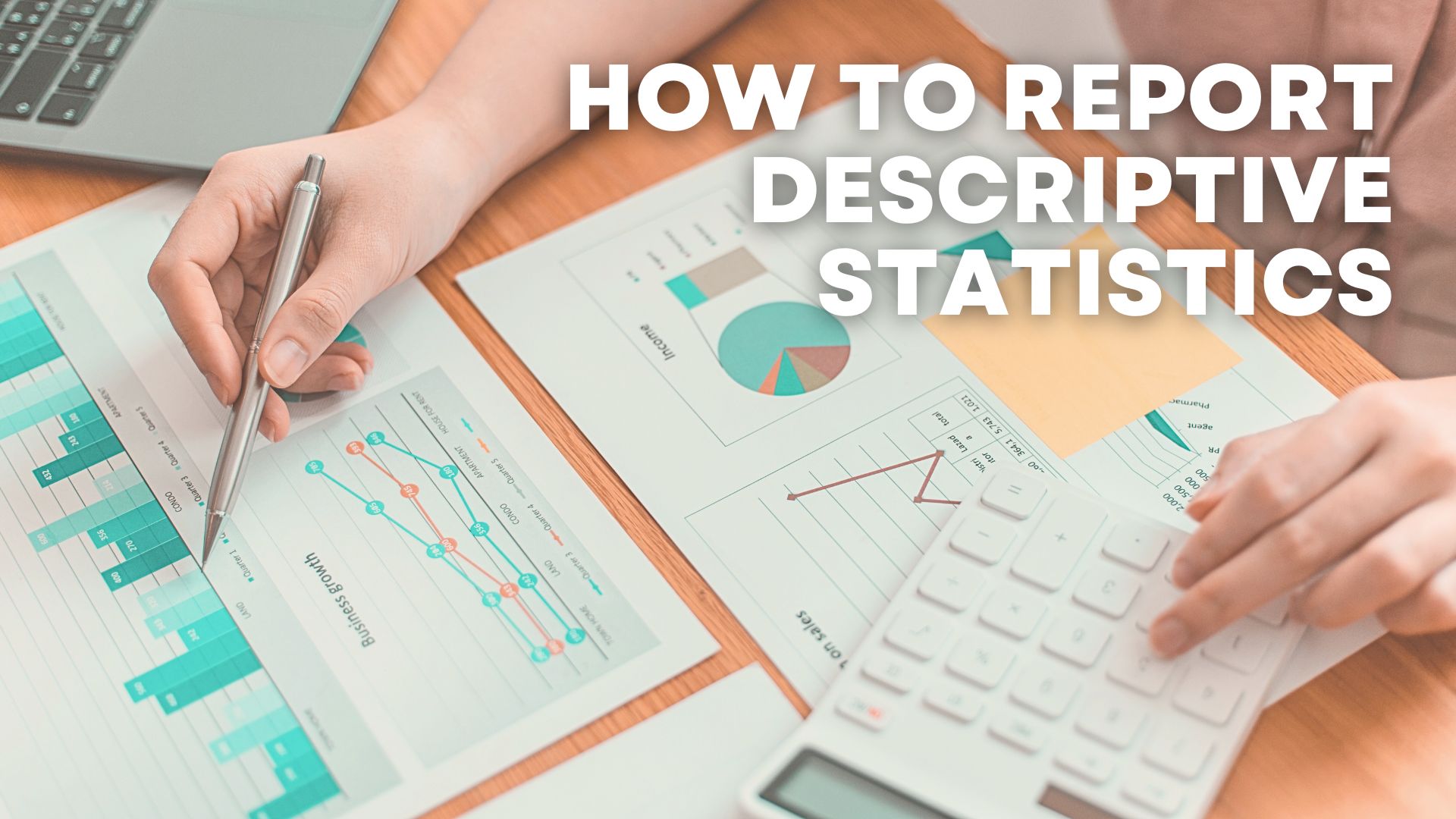Ultimate Guide On How To Write Descriptive Statistics Results

College students are bound to encounter a research paper assignment at some point in their academic journey. Some of these assignments might require you to prove or support your arguments by using descriptive statistic data.
Since statistics is a topic reserved for those perceived to be good in math, most students tend to shun away from such an assignment. Some would throw in the towel without considering the possibility of attempting a descriptive statistics research paper.
Handling descriptive statistics and interpretation paper is not a walk in the park. Many students find this a tough nut to crack, and it is completely doable with the right information. This article highlights key aspects of writing descriptive statistics alongside relevant tips, and descriptive statistics report examples to sharpen your skills for the stats research paper.
Table of Contents
What is Descriptive Statistics?
To understand how to write descriptive statistics results quickly and efficiently, it is vital to learn about the true meaning of descriptive statistics and why it is important. ‘Descriptive statistics’ is the presentation, summary and analysis of the findings linked to a data set from a particular sample.
It makes it possible to present data in a meaningful, easy to interpret and visualize. In other words, descriptive statistics simplify raw data into information that can be comprehended smoothly by the people for which it is intended. A good number of students have a hard time distinguishing between inferential statistics and descriptive statistics.
Unlike inferential statistics that try to conclude given data, descriptive statistics only describe the sample data. Another big contrast between the two is that: descriptive statistics are quantitative while inferential statistics is qualitative. There are three special categories in descriptive statistics, namely:
- The measure of Central Tendency
It is the descriptive summary of a dataset using a single value pointing to the data distribution centre. Measures of the central tendency come in the form of mean, mode, and median.- Mean: It refers to the common unit or the average of a data set
- Mode: It is the second positional average that indicates a higher frequency within a series
- Median: It is the midpoint within a series where half the values are bigger than the median, and half the values fall below the median.
- Measure of Dispersion
Dispersion is evaluated from a range of variance and standard deviation where the range is the difference between the biggest and smallest values. Standard deviation and variance are used to measure dispersion.
How to Write Descriptive Statistics
There is no definite format of how to write descriptive statistics in APA format and so on. However, we have some expert tips to help you report descriptive statistics results clearly, to the point and easy to understand.
- Cite all statistics in a single section.
Thus, it is advisable to take a direct approach when reporting a statistic in your paper. For a more attractive and organized outlook, you are encouraged to cite all your statistics regarding a certain topic in one paragraph or section. Otherwise, you can have all the descriptive statistics within the parenthesis. - Incorporate proper visualization options
A neater option is to report your statistics through proper visualization options like tables, graphs, etc. If you choose to walk down this route, you must highlight the text’s key statistic. You will have to provide a short explanation capturing details in your graph or table. It will give you an easy time when breaking down what the statistic represents.
Apart from saving you a lot of time, this approach will also save tons of space while keeping your paper as clear as possible. Keep in mind that descriptive statistics are incorporated in research papers to condense massive bits of data into simpler and more comprehensive pieces of information. Hence, it makes no statistical sense to a real data set in your paper.
Using simpler data forms like standard deviation, median and mode, you will avoid any irrelevant information. Instead, you will be presenting your reader with a clear picture of your data distribution to help him, or her connect it to your arguments in a seamless manner. Check out our list of the topics on how to report descriptive statistics results to get you started:

Topics on How To Report Descriptive Statistics
- Bullying statistics: Discuss the main causes of bullying in schools and its impact on children
- Use statistics collected over two years to examine the effects of enjoying life and working at the same time
- Explain how rotationally invariant statistics are used to determine the pores in fingerprints
- Depression and statistics: examine the major causes of depression in the US
Reporting Descriptive Statistics Topics
- How important is calculating variance, range and standard deviation when conducting research
- Examine how to use the probability of containment for multiple branching process for emerging epidemics
- Election and statistics: a case study on you can use exit poll data to predict the outcome of elections
- Doping statistics: a review of doping statistics for the last 20 years and its significant impact on athletes
Topics on How To Write Descriptive Statistics
- Exploring relationships between two variables
- Examining random sampling error based on stimulation computation
- Statistical analysis on mortality transition in Africa
- Which sampling design is commonly addressed in statistics
- Discuss the meaning of controlling another variable in multiple regression
- Highlight the best way to evaluate standard deviations from cylindrical
- Break down the best approach to utilize when studying non-linear relationships
Using any of the writing prompts above, you can jumpstart your way into writing descriptive statistics papers. It all begins with making the first baby step, and you’ll be walking all around the room sooner than you know it.
Getting Help With Statistics Is Easy!
Writing statistical papers can be a remarkably demanding task that pushes many students beyond their limits. Hopefully, you will find it a lot easier with our guide. Nevertheless, we are well aware of how daunting a task reporting descriptive statistics results can be. I know you are still unsure whether you can find statistics writing help from a cheap professional.
Well, worry no more. You can get homework assistance from expert writers online. They are super dependable delivering top most quality work, which you can confirm that from their example of descriptive statistics report among other samples. Other students are already receiving superb grades courtesy of online writing platforms. What are you waiting for now?
FAQ
What is an example of a descriptive statistic?
A good example of descriptive statistics is a student’s grade. For example, if you took five exams. To get the descriptive statistics, you should divide all the points you got from the exam by 5. The answer that you get is descriptive statistics.
How do you write descriptive statistics in text?
The best way to write descriptive statistics in a text is by having at least one form of central tendency or an average. It can either be a mean, mode, or medium. You also need to have at least one form of variability. You must specify the sample size and present your work clearly and concisely.
How do you describe descriptive statistics?
You can use various ways to present descriptive statistics in your paper, such as graphs, dispersion, measures of association table, and central tendency. Descriptive statistics should offer a meaningful data summary.




















